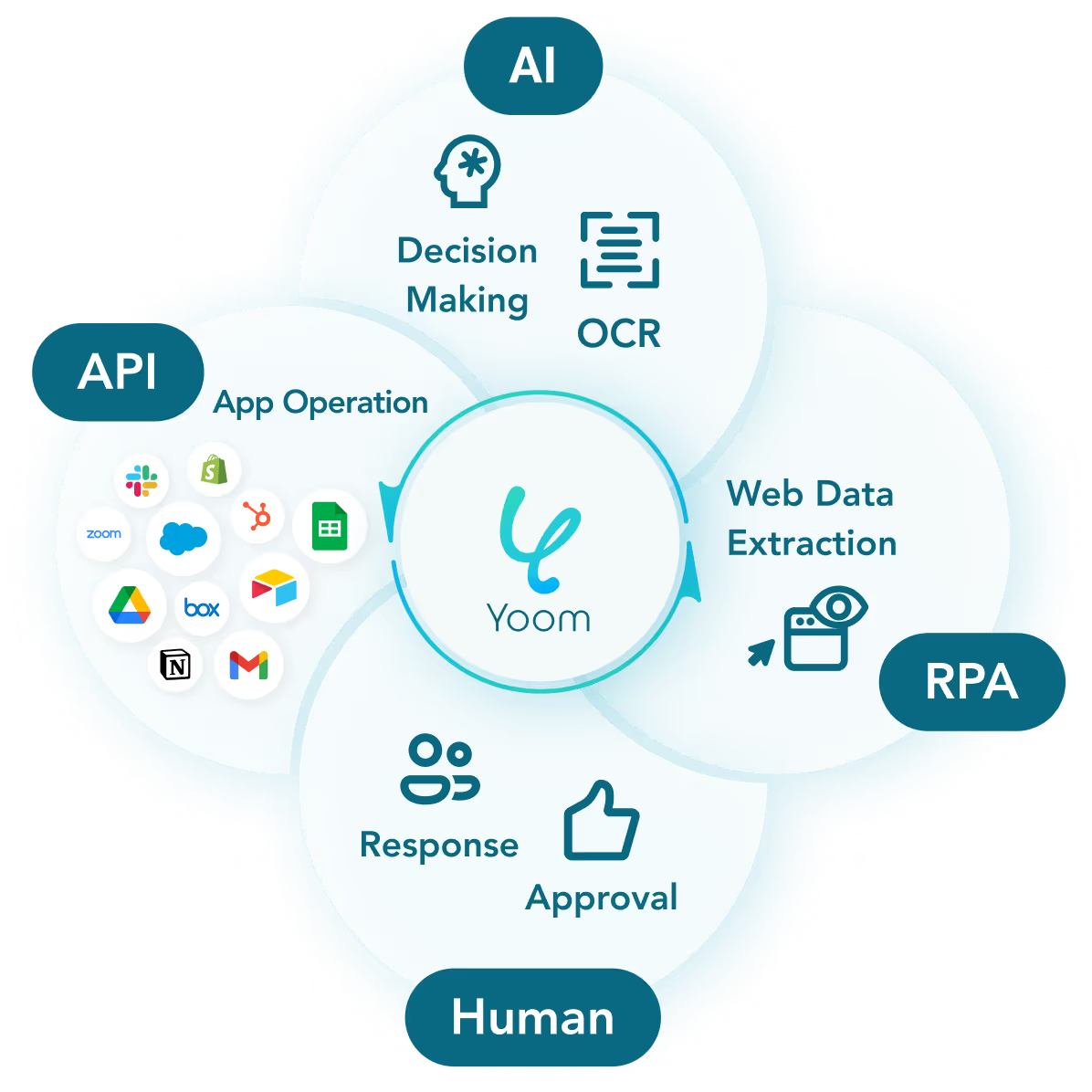
■Overview
This flow automatically adds information about new employees submitted via Google Forms to a GitHub repository.
By using Yoom, you can easily connect apps without the need for programming.
■Recommended for
1. Those who use Google Forms for work
・Those who manage data collected through Google Forms
2. Those who use GitHub
・Teams that utilize GitHub for project work
・Those who want to prevent oversights in adding users to repositories or errors in granting permissions
■Benefits of using this template
GitHub is a useful tool for team collaboration, but adding users to a repository manually can be cumbersome.
Moreover, incorrect permission grants to users can lead to unintended incidents, potentially disrupting business operations.
With this flow, you can add users to a GitHub repository based on the information of new employees submitted via Google Forms.
Using Google Forms ensures that the process of adding users to the repository is not dependent on a single person, allowing the process to continue even in the absence of the responsible person.
You can also choose the permissions to set on GitHub, allowing for consistent account permission settings.




 When an Issue is Created
When an Issue is Created
 When an Issue is Created or Updated
When an Issue is Created or Updated
 When a Pull Request is created
When a Pull Request is created
 When a Pull Request is created or updated
When a Pull Request is created or updated
 When a comment is created on an Issue or Pull Request
When a comment is created on an Issue or Pull Request
 When an Issue is Closed (Webhook Trigger)
When an Issue is Closed (Webhook Trigger)
 When an Issue is Opened (Webhook Trigger)
When an Issue is Opened (Webhook Trigger)
 When a Webhook is Received (Webhook Trigger)
When a Webhook is Received (Webhook Trigger)
 When an Issue is Opened (Webhook Trigger)
When an Issue is Opened (Webhook Trigger)
 When a form response is submitted
When a form response is submitted
 Create Issue
Create Issue
 Add a collaborator to a repository
Add a collaborator to a repository
 List Issues
List Issues
 Retrieve Issue
Retrieve Issue
 Add Comment to Issue/Pull Request
Add Comment to Issue/Pull Request
 Update Issue
Update Issue
 Search Issue and Pull Request
Search Issue and Pull Request
 Search Users
Search Users
 Create Pull Request
Create Pull Request
 Get Pull Request
Get Pull Request
 Update Pull Request
Update Pull Request
 Remove User from Repository
Remove User from Repository
 Search Issue
Search Issue
 Search Pull Request
Search Pull Request
 List commits
List commits
 Create release notes
Create release notes
 Get List of Answers
Get List of Answers
 Get Specific Answer Information
Get Specific Answer Information
 When an Issue is Created
When an Issue is Created When an Issue is Created or Updated
When an Issue is Created or Updated When a Pull Request is created
When a Pull Request is created When a Pull Request is created or updated
When a Pull Request is created or updated When a comment is created on an Issue or Pull Request
When a comment is created on an Issue or Pull Request When an Issue is Closed (Webhook Trigger)
When an Issue is Closed (Webhook Trigger) When an Issue is Opened (Webhook Trigger)
When an Issue is Opened (Webhook Trigger) When a Webhook is Received (Webhook Trigger)
When a Webhook is Received (Webhook Trigger) When an Issue is Opened (Webhook Trigger)
When an Issue is Opened (Webhook Trigger) Create Issue
Create Issue Add a collaborator to a repository
Add a collaborator to a repository List Issues
List Issues Retrieve Issue
Retrieve Issue Add Comment to Issue/Pull Request
Add Comment to Issue/Pull Request Update Issue
Update Issue Search Issue and Pull Request
Search Issue and Pull Request Search Users
Search Users Create Pull Request
Create Pull Request Get Pull Request
Get Pull Request Update Pull Request
Update Pull Request Remove User from Repository
Remove User from Repository Search Issue
Search Issue Search Pull Request
Search Pull Request List commits
List commits Create release notes
Create release notes When a form response is submitted
When a form response is submitted Get List of Answers
Get List of Answers Get Specific Answer Information
Get Specific Answer Information Get List of Responses (Specify Response Period)
Get List of Responses (Specify Response Period) Get Form Questions
Get Form Questions Update Form Title and Description
Update Form Title and Description Update Question Titles and Descriptions
Update Question Titles and Descriptions Create a new form
Create a new form Update form visibility settings
Update form visibility settings Add a short/paragraph question (title and description)
Add a short/paragraph question (title and description) Add a choice question (radio, checkbox, or dropdown)
Add a choice question (radio, checkbox, or dropdown) Add a grid question (multiple-choice grid / checkbox grid)
Add a grid question (multiple-choice grid / checkbox grid) Add a question title and description (Date/Time)
Add a question title and description (Date/Time) Add a question title and description (Linear scale)
Add a question title and description (Linear scale) Add a question title and description (Image + text)
Add a question title and description (Image + text) Add a question title and description (Image + choice)
Add a question title and description (Image + choice) Add a question title and description (Choices with images)
Add a question title and description (Choices with images)